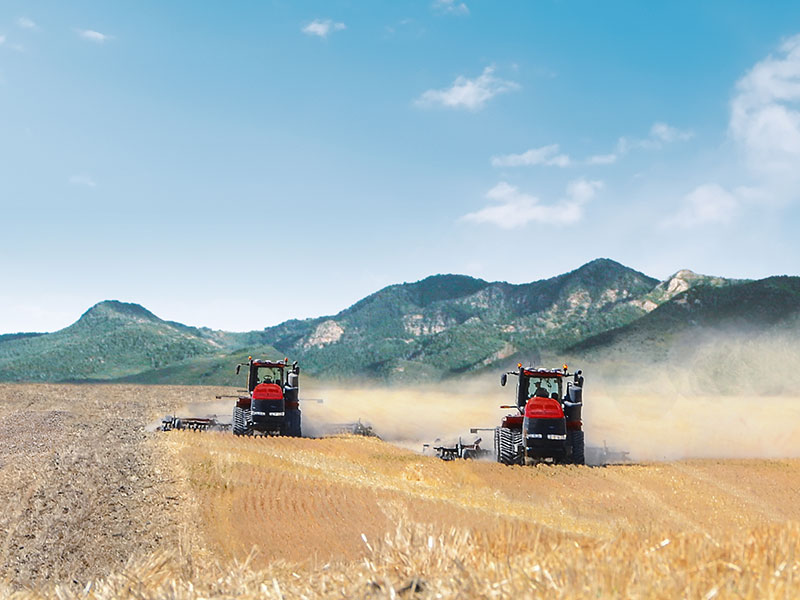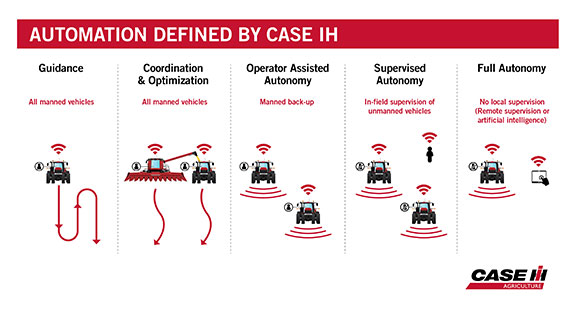The Case IH autonomous concept vehicle is conducting its first field trials with Bolthouse Farms in the US in an attempt to understand how new autonomous technology can be used and how it meets real-world requirements
 |
|
Supervised autonomy, one of the five categories of automation as defined by Case IH, allows an operator in one tractor to supervise the operation of a tractor in the same field without an operator.
|
The autonomous tractor created a buzz when it was revealed in 2016, and again when it reached Australian shores for Agquip last year. Now, the company is taking the next step with this technology through its Autonomy and Automation Program, researching and piloting autonomous technology in real-life scenarios.
“While the autonomous concept vehicle reveal in 2016 showed the world what’s possible with autonomous vehicles, it was just that — a concept,” Case IH AFS global product manager Robert Zemenchik says.
“This working tractor provided a platform for us to start discussions with farmers and the industry about the technology needed for high-efficiency farming operations today and in the future.
“We’re ready to show how automation and autonomy applies across agriculture and how it can advance the precision farming solutions our customers are currently using on their farms,” he adds.
The autonomous tractor pilot program with Bolthouse Farms will commence this year.
“The only way to validate on-farm uses for autonomous technology is, quite literally, with field pilots where farmers use it on their own farm, integrate it into their own fleet and conduct their everyday activities,” Zemenchik says.
Bolthouse Farms is one of North America’s largest carrot producers. Case IH says that the company’s focus on and openness to advanced technology, coupled with their desire to improve productivity, makes it ideal for the Case IH Autonomy and Automation Program.
A small fleet of autonomous Steiger Quadtrac tractors pulling a True-Tandem disk harrow or Ecolo-Tiger disk ripper will be used for the pilot program, which focuses on primary tillage and deep tillage. This will help evaluate autonomous machine control in a variety of tillage applications, soil types, meteorological conditions and sensing and perception activities.
“One of the primary goals is to receive agronomic and operator feedback on the use of autonomous technology in real-world farm conditions,” Zemenchik says. “Additionally, we will be able to learn from Bolthouse Farms what uses they envision for automation and autonomy that we might not have already thought of.”
Bolthouse Farms vice president of agriculture Brian Grant sees the autonomous tractor pilot program as an opportunity to boost efficiency and deliver high-quality food for the world’s growing population.
“We’re just now starting to play the ‘what if?’ game — where we’re asking ourselves and the Case IH engineers the questions about what autonomous tractors are capable of,” Grant says. “And the answers to these questions are not ‘if’, they’re ‘when’.”
 |
|
Automation defined by Case IH
|
Five categories of automation for agriculture
Diverse farming operations around the world require varying levels of automation. Through extensive customer-driven product design research, Case IH has found that current and future technology needs fall into five categories of automation for agricultural field applications.
These are:
• Guidance
• Coordination & Optimization
• Operator Assisted Automation
• Supervised Autonomy
• Full Autonomy

